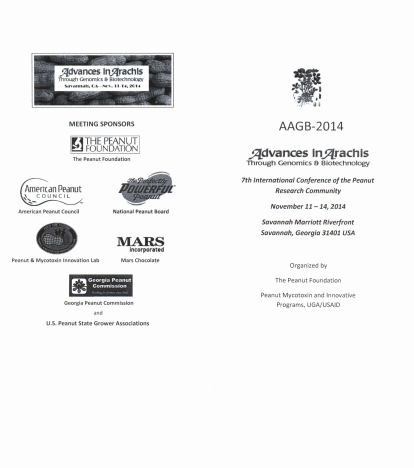Drought tolerance mechanisms for response to pre- and post-flowering drought stress of groundnut in a dryland ecology
Summary
Groundnut (Arachis hypogaea L.) is an important food and oilseed crop grown by small-scale, resource poor farmers under the diverse agro-climatic environments of West Africa. About 90% of the world’s groundnut production occurs in the tropics and semi-arid tropics which are characterized by high temperatures and low or erratic rainfall. Since 1984, the area allocated to groundnut production in West Africa has increased by 6-8% annually, but yields are consistently below the world average. Intermittent mid- and end-of-season droughts bring about a significant decline in the yield of groundnut, especially in marginal areas of north-western Nigeria and the Niger Republic. The objective of this work was to investigate the mechanisms of drought tolerance of selected groundnut cultivars in these regions under pre- and post-flowering drought stress. The research was carried out at an ICRISAT Nigeria screen house in Kano (11°58’N, 8°33’E) during the dry season of 2014 (February to May). Ten varieties (6 improved, 4 local) were planted at two moisture stress intervals. The first stress was imposed at pre-flowering and early flowering stages (21-40 DAS) and the second stress was imposed at post-flowering stage (41-60 DAS). Drought stress was imposed by withholding water until visible signs of wilting were observed on the leaves before irrigation was resumed. The 10 varieties were grouped as drought tolerant, drought susceptible, and unknown. Data was analyzed using GENSTAT V. 16. An analysis of variance was employed to test for significant responses between the different factors. Pre-planned comparisons were made using orthogonal contrasts based on two groupings – stress period and varietal groupings. The study revealed a wide variation in physiological responses to periods of drought stress among groundnut cultivars. Cultivars that maintain high yield under drought conditions all showed similar characteristics, i.e. low CT, high SR, high SPAD, and high RWC. Yield reduction from drought stress has been extensively reported, but most reports focus on the general impacts of drought without mentioning periods that are most damaging to yields. Drought stress at both pre- and post-flowering periods significantly reduced pod yield for all the varieties, although the severity of reduction was different.
Open resource Download resource Access resource on external site

